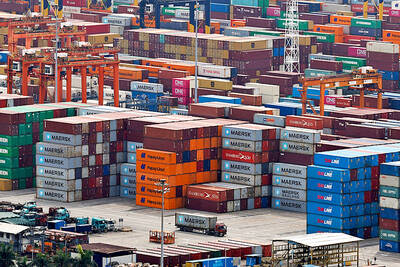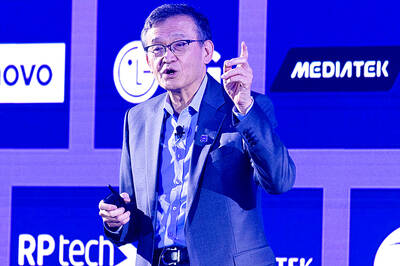CSBC-DEME Wind Engineering Co (CDWE, 台船環海) on Thursday announced its final investment decision on the construction of Green Jade, a crane vessel for carrying out engineering, procurement, construction and installation (EPCI) services for the offshore wind energy industry.
The company, a joint venture between CSBC Corp Taiwan (台灣國際造船) and Belgium-based Dredging, Environmental and Marine Engineering NV, said that CSBC would build the nation’s first domestic floating class-3 dynamic positioning (DP3) heavy lift and installation vessel at its Kaohsiung shipyard, with delivery scheduled for 2022.
With its 4,000-tonne crane capacity and DP3 capability, Green Jade, which would operate under the Taiwanese flag, would be perfectly equipped to serve the renewables market, CDWE said in a statement.
“With Green Jade we will be uniquely positioned to meet the future requirements of our customers and the trend toward larger capacity turbines and bigger wind farm projects, which deliver energy at lower costs,” CDWE chairman Robert Tseng (曾國正) said in the statement.
“Green Jade will be capable of installing mega monopiles and jacket structures at greater water depths,” he said.
After signing a large-scale Balance of Plant Preferred Supplier Agreement with the Hai Long (海龍) offshore wind farm project late last year, CDWE would use the new vessel for the transport and installation of foundations and wind turbines for the Hai Long wind farm off the coast of Changhua County.
The Hai Long project is being codeveloped by Northland Power Inc, Yushan Energy Pte (玉山能源) and Mitsui & Co.
Green Jade would also be deployed for the Chong Neng (中能) wind farm project of China Steel Corp (中鋼) and Copenhagen Infrastructure Partners K/S in the same area, CDWE said.

The Eurovision Song Contest has seen a surge in punter interest at the bookmakers, becoming a major betting event, experts said ahead of last night’s giant glamfest in Basel. “Eurovision has quietly become one of the biggest betting events of the year,” said Tomi Huttunen, senior manager of the Online Computer Finland (OCS) betting and casino platform. Betting sites have long been used to gauge which way voters might be leaning ahead of the world’s biggest televised live music event. However, bookmakers highlight a huge increase in engagement in recent years — and this year in particular. “We’ve already passed 2023’s total activity and

Nvidia Corp CEO Jensen Huang (黃仁勳) today announced that his company has selected "Beitou Shilin" in Taipei for its new Taiwan office, called Nvidia Constellation, putting an end to months of speculation. Industry sources have said that the tech giant has been eyeing the Beitou Shilin Science Park as the site of its new overseas headquarters, and speculated that the new headquarters would be built on two plots of land designated as "T17" and "T18," which span 3.89 hectares in the park. "I think it's time for us to reveal one of the largest products we've ever built," Huang said near the

China yesterday announced anti-dumping duties as high as 74.9 percent on imports of polyoxymethylene (POM) copolymers, a type of engineering plastic, from Taiwan, the US, the EU and Japan. The Chinese Ministry of Commerce’s findings conclude a probe launched in May last year, shortly after the US sharply increased tariffs on Chinese electric vehicles, computer chips and other imports. POM copolymers can partially replace metals such as copper and zinc, and have various applications, including in auto parts, electronics and medical equipment, the Chinese ministry has said. In January, it said initial investigations had determined that dumping was taking place, and implemented preliminary

Intel Corp yesterday reinforced its determination to strengthen its partnerships with Taiwan’s ecosystem partners including original-electronic-manufacturing (OEM) companies such as Hon Hai Precision Industry Co (鴻海精密) and chipmaker United Microelectronics Corp (UMC, 聯電). “Tonight marks a new beginning. We renew our new partnership with Taiwan ecosystem,” Intel new chief executive officer Tan Lip-bu (陳立武) said at a dinner with representatives from the company’s local partners, celebrating the 40th anniversary of the US chip giant’s presence in Taiwan. Tan took the reins at Intel six weeks ago aiming to reform the chipmaker and revive its past glory. This is the first time Tan